From visual recognition cameras, to portable fingerprint scanners and live-streamed video - technology plays a vital role in keeping police forces connected, out on the street and saving lives
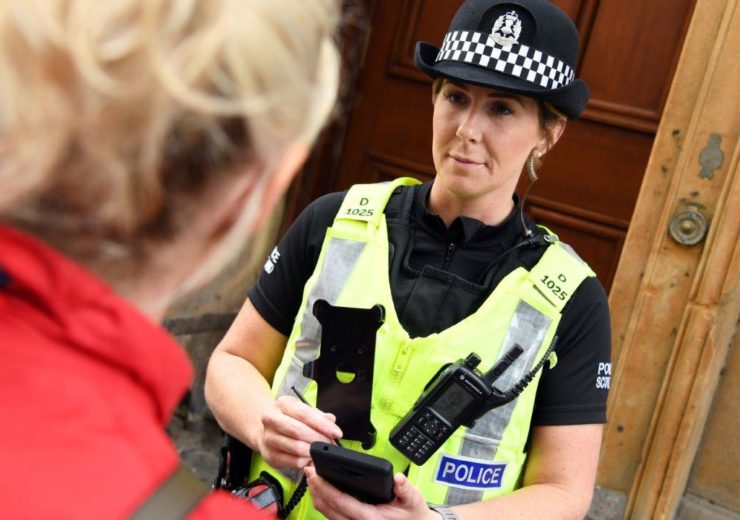
Motorola Solutions is undergoing a reinvention as it looks to be the main communications technology partner for the UK’s emergency services. Sam Forsdick visits its London innovation centre to get the first look at some of the technology that will soon be used by UK police forces.
Sirens whir and blue lights flicker as a police car weaves in and out of traffic in pursuit of a stolen Porsche.
Back in the control room, a team of 40 works across a wall of computer screens.
A digital map centres on the last known location of the stolen car, while details of the make, model and owner registration are highlighted in an incoming feed.
A couple of clicks on the control panel at HQ brings up CCTV footage from the street and the dashboard syncs to the time the crime was reported – revealing a man in a hooded tracksuit breaking into the sports car.
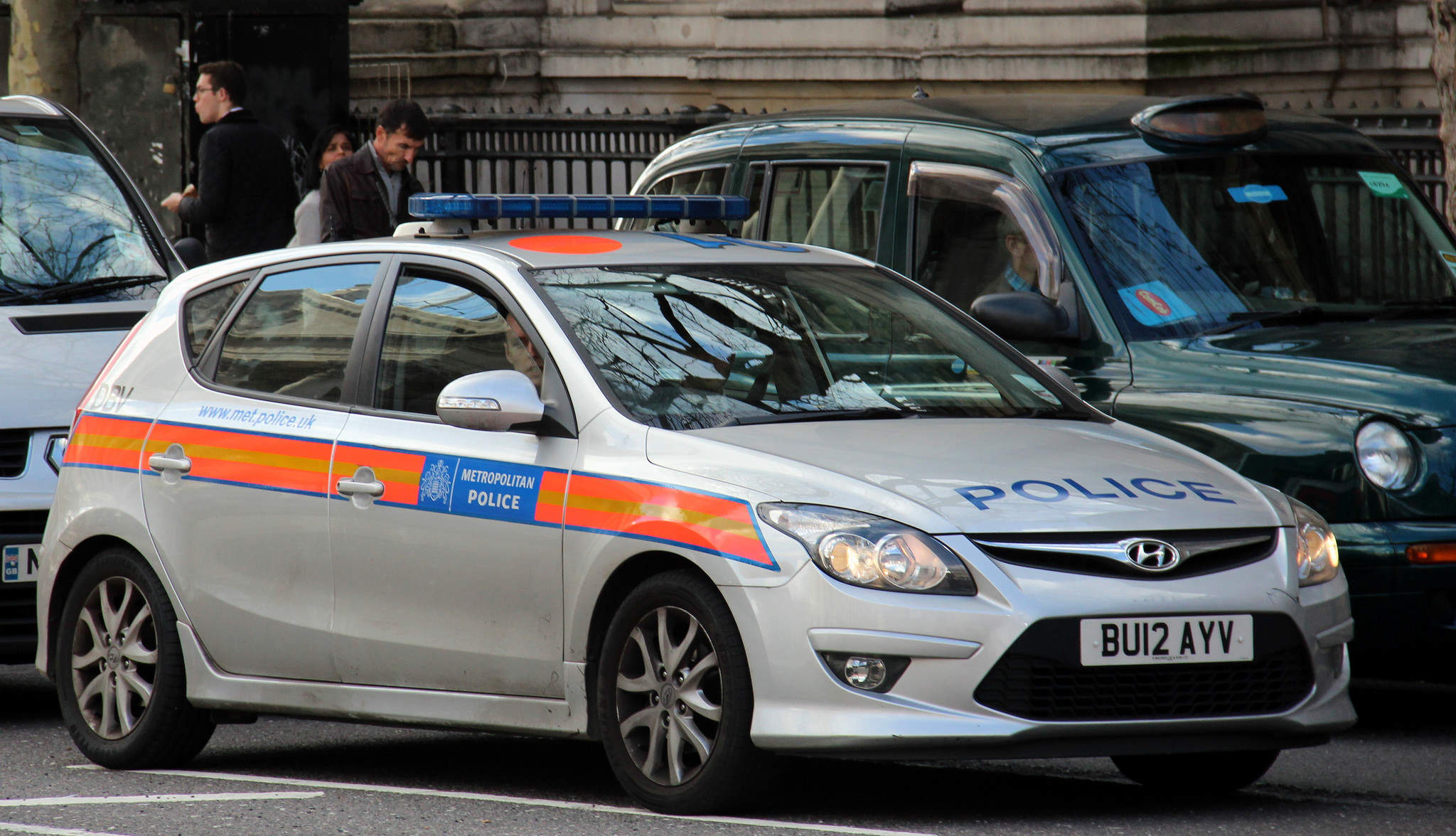
After pulling the vehicle over, the officer looks to his smartphone, which provides a real-time feed of intelligence updates directly from the control room – and an arrest is made.
This could soon be the scene in command centres across Britain, as Motorola Solutions looks to roll out its first streamlined operational software suite with Lincolnshire Police.
The company’s head of policing David Robinson says CommandCentral – a cloud-based platform that leverages data to help operational staff to identify crime trends, track down leads and communicate with officers on the ground in a single user interface – could be revolutionary in replacing the previous siloed approach to deploying technology.
“We’re trying to evolve from a communications infrastructure company to a software firm,” he adds.
“Our tech connects the cops on the street to the control room, so they can inform the officer of additional information.
“People often assume that the police have been able to do a lot of these things already, but it’s truly transformational.”
Motorola’s move to technology partner for the police
The Motorola name may trigger memories of the Motorola Razr – the popular flip phone of the early 2000s that sold 130 million units – but for UK police forces, the company provides a vital communications lifeline.
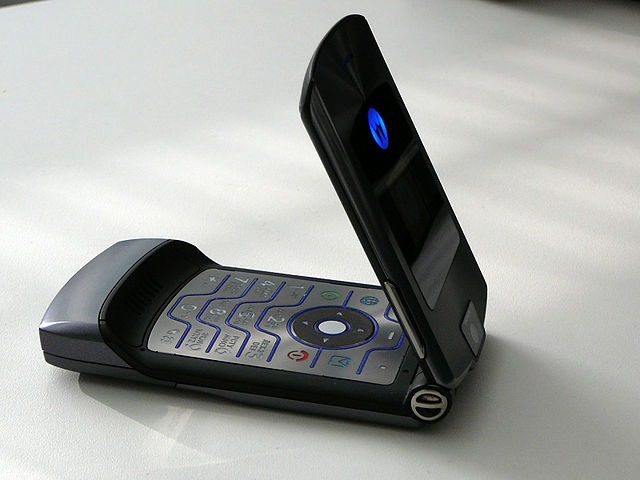
Motorola radios have been used by officers and security services personnel for 90 years.
Since the mobile brand that some may be more familiar with was spun out and bought by Lenovo in 2014, Motorola Solutions has quietly been acquiring a number of smaller technology companies.
These have included anyone from data analytics providers to motion detection software providers, in a bid to build a more complete communications solution for the emergency services.
The latest additions to the Motorola portfolio include live-streaming body-worn cameras that provides eyes-on-the-ground for the control room, portable fingerprint scanners and a mobile app that replaces the many forms and notepads that officers usually have to carry around.
Robinson says: “Over the long term, we want to be seen as a technology partner for blue light and emergency services because we think that’s what people will increasingly need.
“We want to be a complete solution that can help get the right information to the right people at the right time – whether that’s mission-critical voice communication or police checks on mobile devices.”
The evolution of police radio technology
Radios remain a big proportion of Motorola Solutions’ business – with sales representing $60m worth of revenue each year.
The equipment ranges from licence-free devices, primarily used by hobbyists, to professional digital radios, used by security teams and on building sites.
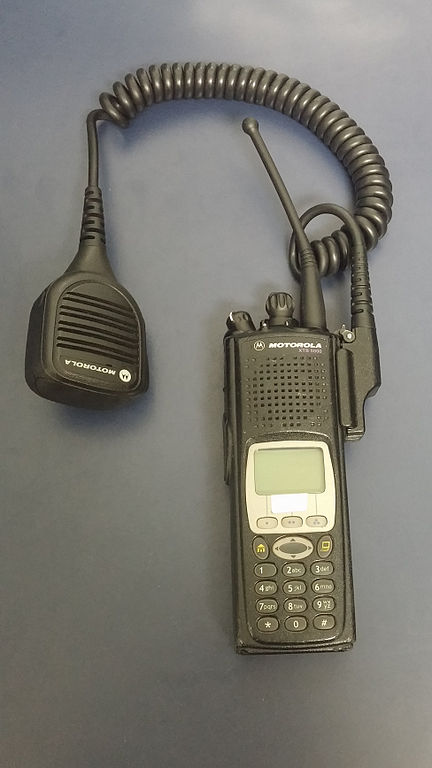
Senior technology architect Adrian Parsons explains why voice communication is still so important for police officers.
“Part of that mission-critical voice service provision is guaranteed voice communications in less than a quarter of a second anywhere in the UK,” he says.
“If there’s a police officer in the Isle of Wight who needs to talk to their duty sergeant in Scotland, it will only ever be a quarter of a second delay maximum.
“When the emergency button is hit – and it is pushed on average once every six minutes in the UK – it gives a prioritisation to the police officer that’s in distress or needs support immediately.
“That goes to the control room to allow the team to react and respond quickly.”
Motorola traditionally provided communications services over a Tetra network – which has set the standard for secure and reliable radio since the 1990s.
Now this service is switching to 4G as more forces replace radio with a smartphone solution.
Robinson explains: “The next evolution of emergency services communications will be done over a 4G network – the functionality will be the same but the user experience will be via a mobile application.
“While Tetra technology is great for voice, reliability and security, it has a very low bandwidth.
“But 4G allows for greater bandwidth, which enables video and image communication on top of voice.”
Bringing police technology into the smartphone era
The pocket notebook was once the most vital piece of equipment for an officer.
But, like the radio, it has been superseded by the smartphone and the additional functionality it provides.
Pronto, a smartphone application developed by Motorola, is the new digital notebook used by 50% of police forces in the UK.
“The best way to think of it is a complete replacement for the officer’s notepad,” says Robinson.
“It’s all now done through the Pronto app.”
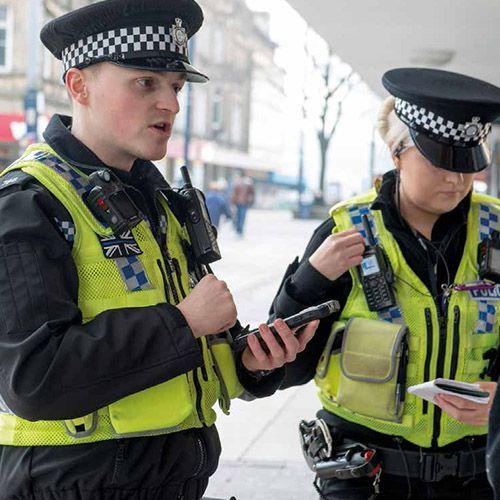
After logging on to the application, all case information assigned to that officer will be updated on the app, providing a time-stamped record of everything done on shift.
Robinson explains: “When an officer used to turn up at the scene of a crime with a notepad to question witnesses, the first would invariably be, ‘what’s your name?’
“Now the officer has these details, taken by the control room operator from the 999 call, available from the outset on the app.
“It removes any duplication of information, which is a complete waste of time and effort.”
If there are several forms to be completed too, it could involve writing down the same details several times.
But Pronto cuts out the paperwork for everything from stop and search forms to intelligence reports.
Portable biometric finger scanners and police databases add another layer of utility to the app.
The pocket-sized devices are satellite-linked to a national fingerprint database and instantly alert officers if a suspect is identified as a convicted criminal from the print.
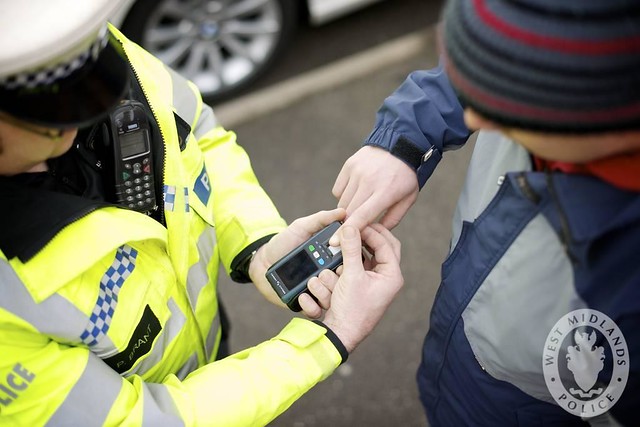
Robinson claims the biggest use case is for uninsured and disqualified drivers who regularly lie about their identity to avoid a fine by the police.
Police officers can now search pre-existing police records and the Driver and Vehicle Licensing Agency (DVLA) to check the photograph and name matches the one given by an offender.
“Currently, the only way to check whether a suspect is lying is to arrest them and take them into custody,” explains Robinson.
“It could take two to four hours to identify who they are, which takes officers off the street.”
Surrey Police has reported a 20% increase in productivity since its officers have been able to complete forms while out on the beat – representing a £7m efficiency saving.
Robinson adds: “If you were to say to a force, ‘do you want a 20% budget increase to buy more officers?’ they’d snap up the offer, but that’s effectively what they’re getting.”
How police forces use live video
Live streaming is the latest addition to Motorola’s devices, which will soon be in the hands of officers.
It is a particularly useful feature for negotiators.
Robinson says: “If a negotiator has been tasked with talking someone down from the top of a building, the rest of the negotiation team – who are often in a van at the bottom of the building feeding them information and what to say – will be able to see what’s happening.
“At the moment, they use an open mic that picks up speech and can only hope that they’re reading the situation correctly.
“With the introduction of live video, they can now hear and see the situation in real time, meaning the psychologist and strategist can provide better advice.”
He also believes it’s a “game-changer” in the way that body-worn video works.
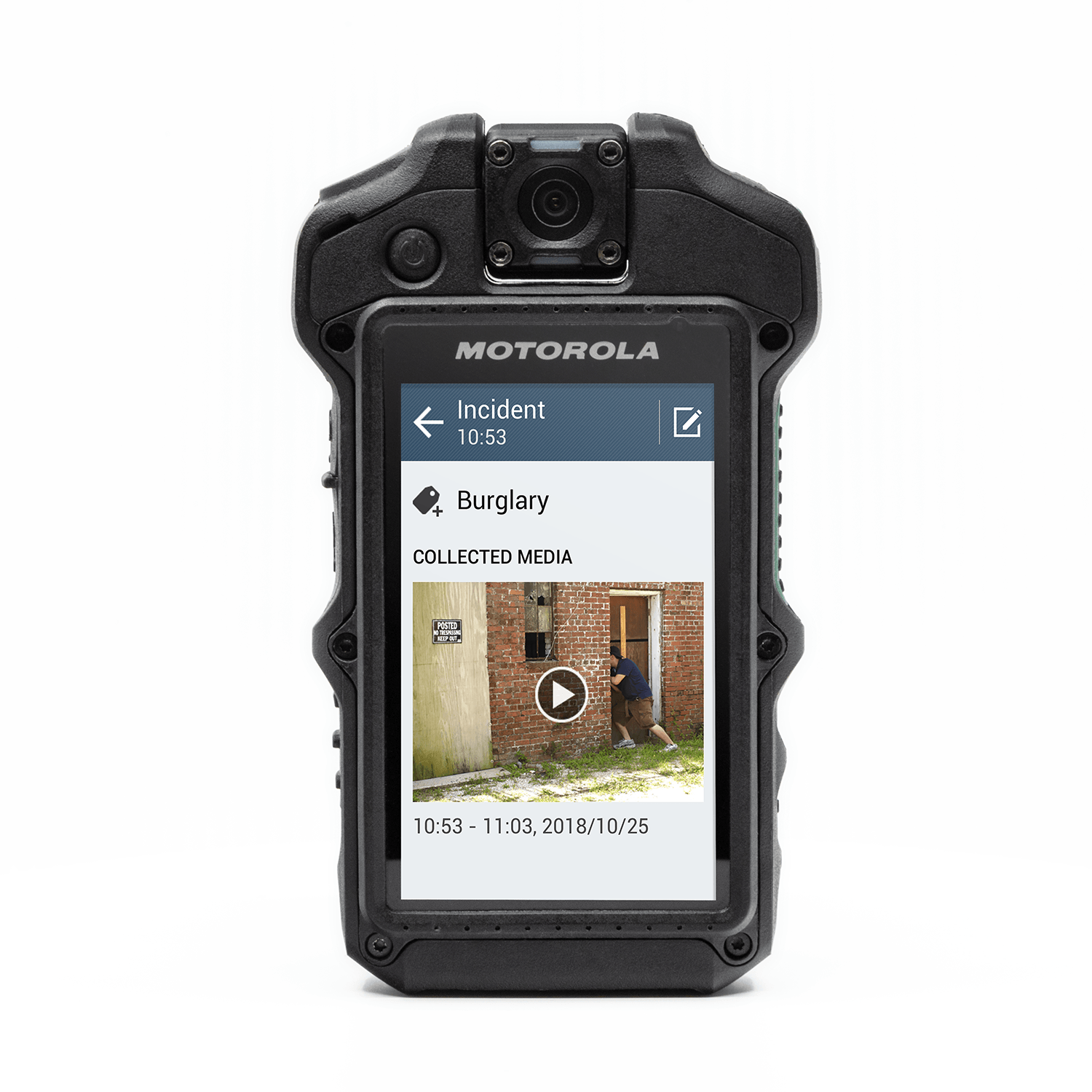
Parsons adds: “Body-worn video can be live-streamed in the command control room, allowing them to react and respond faster, and then annotate it and record it in my digital police notebook.
“The career criminals are beginning to notice the technology becoming more advanced and it’s making their life so hard that they often accept the charge straight away.”
A data-driven control centre
While digital note-taking and live video feeds are useful in their own right, Motorola Solutions has bigger plans to takeover the entire digital infrastructure of the control room – the nerve centre of any police operation.
The main functions of a control room over the past 15 years have been to take incoming emergency calls, deploy resources and give updates to officers.
As the number of incoming data points increases, it is no longer possible to effectively control operations with 20 monitors that provide 20 different information feeds.
To remedy this issue, Motorola has developed a control room suite, named CommandCentral Aware.
Parsons describes it as a “situational awareness tool that combines all our solutions and gives the most relevant information to you on one single pane of glass”.
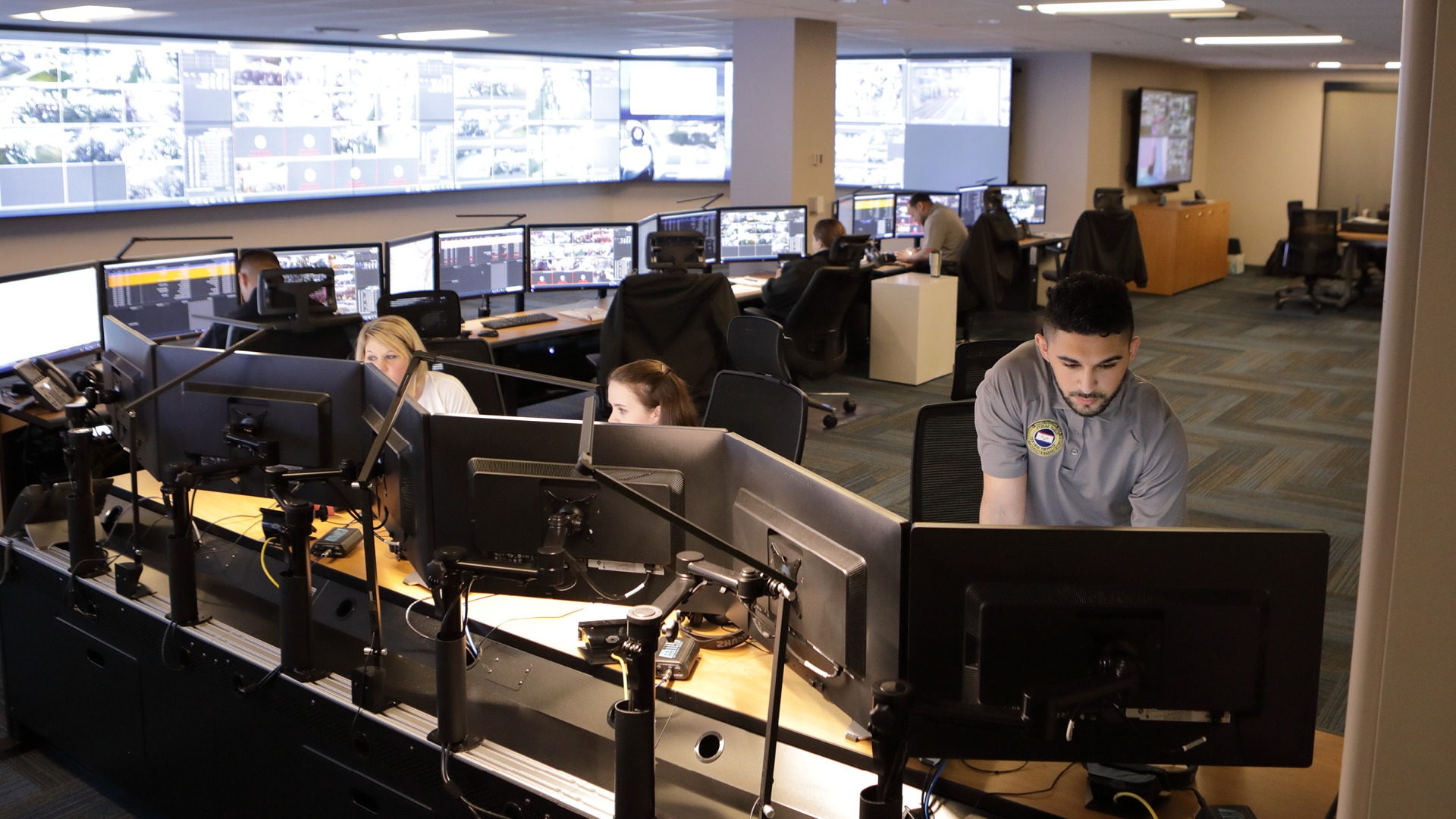
He adds: “One of the things emergency services have struggled with over the past few years is the sheer volume of data and the ever-increasing number of sources.
“You’re relying on one or two people in a control room to effectively be a systems integrator for several systems.
“The control room will traditionally have a wall of CCTV feeds, body-cam videos from officers and a library of digital evidence, as well as missing person and vehicle registers, which all need to be accessed quickly.
“Our solution adds data analytics, which allows the right information to be pushed to the control room operator when it’s most relevant, rather than having to monitor everything at once.”
One example Parsons gives is using visual recognition to highlight CCTV footage if it displays an unusual pattern of behaviour.
Visual analytics is capable of quickly learning what a normal pattern of behaviour is.
Parsons says: “If you’ve got 3,000 cameras around your city centre, do you need to be watching them all 24 hours a day? The answer is probably not.
“The visual analytics will be able to proactively warn the control room operator when it sees unusual behaviour.
“It can also differentiate between people and vehicles – so, if a path that has exclusively been occupied by people for the last four months suddenly has a vehicle on it, the control room will be immediately alerted.”
CommandCentral Aware streamlines the process of tracking criminal activity too, with all the relevant information tagged to a digital map.
The operator can focus on a type of crime to see if there are any patterns.
The locations of police officers, who are tracked via their mobile phone GPS, are also highlighted.
Any attachments, such as photographs sent in from a victim or personal CCTV footage, can be accessed alongside live video – all on the same screen.
Parsons says: “In London, there can be 3,000 cameras per square mile so the force there wants that granularity down to 50 metres and we can provide that.
“The officer can react and respond faster – all of it can be done in a matter of minutes and it can be the difference in saving lives.”
The partnership with Lincolnshire Police represents a ten-year deal that will see Motorola Solutions bring additional functionality to its control room as technology improves.
Looking to the future, Robinson adds: “Technology is moving so fast that you can’t predict what is going to happen in a few years.
“So being able to add functionality to these technologies moving forward is important to allow for continuous innovation.
“Ultimately, emergency services want to partner with a company that’s committed to innovation so that’s where our future lies.”


